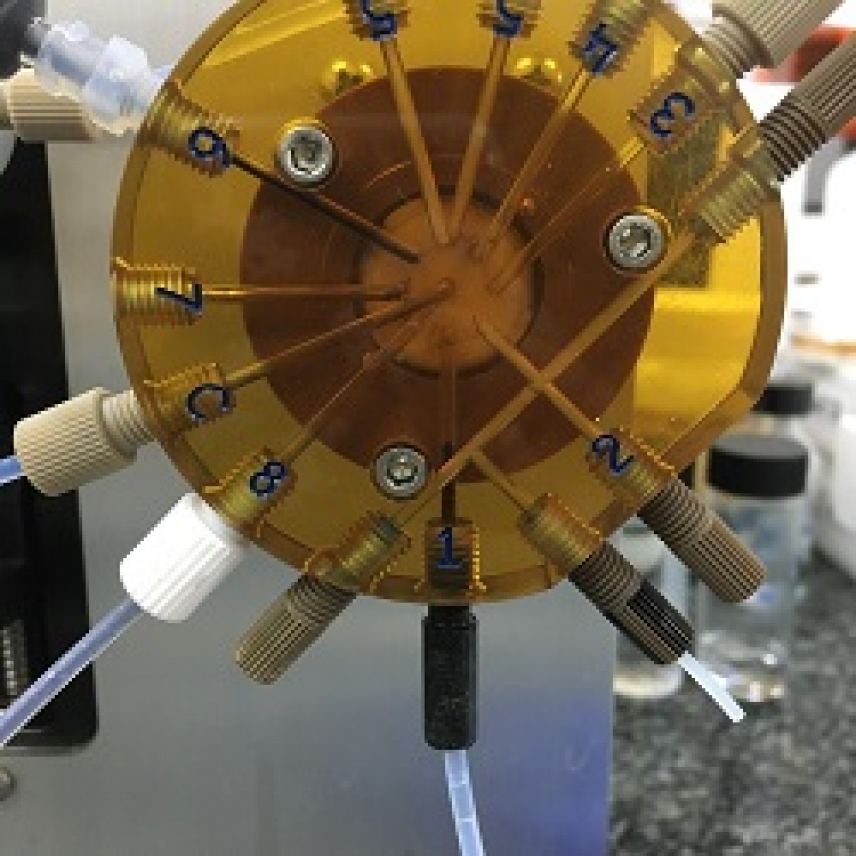
The key to this new method based on nanotechnology is the system known as ‘Lab-on-Valve,’ used by the scientific community for sample analysis. More specifically, the research team led by Analytical Chemistry Professor Marisol Cárdenas has added carbon-coated titanium dioxide nanotubes to this system. To date, the use of nanomaterials in the Lab-on-Valve system was not possible before due to their tendency to aggregate in aqueous media. In this case, the University of Cordoba research group was able to synthesize nanoparticles compatible with the Lab-on-Valve system due to their easy dispersion.
The new system was recently described in the journal Analytical Chemistry. The study’s primary author, University of Cordoba researcher María Teresa García Valverde, explains that “the combination of the Lab-on-valve system, titanium nanotubes modified with amorphous carbon as phase extraction and the measuring tool connected to the system, allows for quantifying parabens and triclosan at very low concentrations.” For the most part, these pollutants come from personal hygiene products such as soap, sunscreen, toothpaste and other toiletries. All of them have very negative effects on the environment.
García explained that with the Lab-on-Valve system, the nanotubes are manipulated automatically, which reduces errors in measurement and “their nanometric size makes them more efficient than other adsorbent solid materials on the market.” She added, “this method is faster, more practical and more efficient.”
García-Valverde, MT; Rosende, M; Lucena, R; Cárdenas, S; Miró, M. Lab-on-a-Valve Mesofluidic Platform for On-Chip Handling of Carbon-Coated Titanium Dioxide Nanotubes in a Disposable Microsolid Phase-Extraction Mode. ANALYTICAL CHEMISTRY. . 2018, 90 (7), pp 4783–4791, DOI: 10.1021/acs.analchem.8b00158


